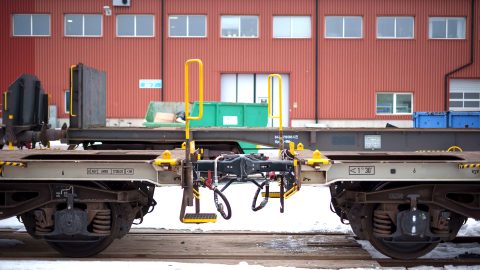Ukrainian Railways scale-up rolling stock production

Ukrainian Railways is ready to take the next step in its in-house production of rail components. According to Daniil Hlushchenko, deputy director of production in the Ukrainian company, European-style grain trucks and universal freight cars suitable for use as covered cars and grain trucks are the next items on the menu.
Ukrainian Railways started in-house production of various rail components following the Russian invasion. Production included containers, new types of sleepers, barriers, brake shoes, and brake tires. At the same time, the company started developing hopper wagons destined for grain transport.
“Ukrainian Railways, for a long time, built only semi-wagons, of which we currently have a certain surplus; we did not concentrate our attention on other rolling stock, but our enterprises, such as gave us the impetus to develop new freight cars at our own facilities and our own design offices, including fitting platforms, of which we have built 500 units since the beginning of the full-scale invasion. In addition, for the first time in the history of the modern company, we built dump trucks and hopper-dosers for track repair at our production facilities,” commented Hlushchenko.
Dump trucks and hopper-dosers were among the most worn-out wagons that Ukrainian Railways owned at the beginning of 2022, just before the war started. Of course, the war heightened the Ukrainian demand for rolling stock to facilitate export processes.
Considering also the phasing out of Russian rolling stock that could be banned from being imported into Ukraine for the next 50 years, starting in-house production was the only logical step, also resulting in financial benefits. In fact, Ukrainian Railways saved over 2,4 million euros compared to using external parties. The money saved concerns the 2022-2023 biennium.
Also read:




